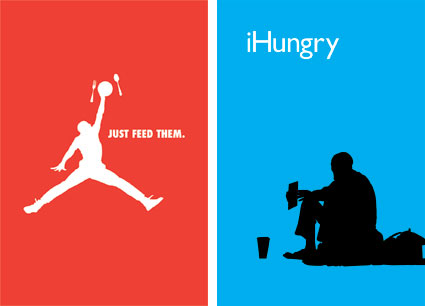Remixing a Source:
As part of your Contextual Analysis assignment, choose one of your research sources and remix it visually with text or image. Your remix should comment on, critique, parody, or create a new meaning from the original source.
Be sure to keep the primary source and location for any images or text that you use, as you’ll need to provide attribution and credit.
Background — some of the contexts, ideas, and reasons for considering remix and remix culture as meaning-making activities:
First, think about how a contextual analysis aspires to contextualize a topic or a text in the service of interpretation and meaning making. Remixing a source recontextualizes both its presentation and meaning, which allows you to gain a new insight into your topic and one of your sources and is an opportunity to generate some new meaning — via critique or parody — around it.
When you post your source remix, include a brief curation:
- Describe the visual remix at a conceptual level. What were you attempting to convey in this piece? What is your persuasive message? Does the composition represent a particular genre or type of text?
- What assumptions does it make of your audience?
- Describe the composition of your source remix. What are the different components of the visual remix, and what is their relationship to each other? Where do you want your audience’s attention to be immediately drawn? How do you want your audience to process the piece and progress through it? Are parts of the image intentionally vague or obscure? Does the composition contain an iconic reference or symbol?
- List the sources of the materials you have used in your visual remix.
Technology: we will use Photoshop in 143 McGaw to explore some of its photo editing and manipulation capabilities.
 Assemblage (composition): Assemblage refers to a text “built primarily and explicitly from existing texts in order to solve a writing or communication problem in a new context.”
Assemblage (composition): Assemblage refers to a text “built primarily and explicitly from existing texts in order to solve a writing or communication problem in a new context.”
 Remix Culture: When is it fair and legal to use other people’s copyrighted work to make your own?
Remix Culture: When is it fair and legal to use other people’s copyrighted work to make your own?
 DJ Spooky: Remix Culture (YouTube archive of his UNC Chapel Hill presentation on Remix): also see his Saturation Station:
DJ Spooky: Remix Culture (YouTube archive of his UNC Chapel Hill presentation on Remix): also see his Saturation Station: 
Through repetition and by reflecting the way it was mediated and repeated over and over again in the news media of the West “Saturation…” acts as a kind of temporal cipher, reducing the repetition to a short term image overload. “Saturation Station” asks like Baudrillard in his essay “The Despair of Having Everything” – how much history can we take?
 Lessig: Remix: Making Art and Commerce Thrive in the Hybrid Economy (352 pp. PDF) via Creative Commons license: Attribution-Noncommercial-No Derivative Works 3.0.
Lessig: Remix: Making Art and Commerce Thrive in the Hybrid Economy (352 pp. PDF) via Creative Commons license: Attribution-Noncommercial-No Derivative Works 3.0.
 “Art ReMix”: Today, we live in a “remix culture” that continuously combines and recontextualizes images and information. The term “remix” comes out of music, deriving from hip-hop artists and djs who started combining the familiar with the new—literally remixing the music to get dancers on the floor and keep them there. In the same way that a remix provides an “alternative” or new version of a song, in the museum it can deliver an alternative view or new perspective on art history and art-making. (Minneapolis Institute of Arts)
“Art ReMix”: Today, we live in a “remix culture” that continuously combines and recontextualizes images and information. The term “remix” comes out of music, deriving from hip-hop artists and djs who started combining the familiar with the new—literally remixing the music to get dancers on the floor and keep them there. In the same way that a remix provides an “alternative” or new version of a song, in the museum it can deliver an alternative view or new perspective on art history and art-making. (Minneapolis Institute of Arts)
 Copyright Law of the U.S.: § 107. Limitations on exclusive rights: Fair use
Copyright Law of the U.S.: § 107. Limitations on exclusive rights: Fair use



